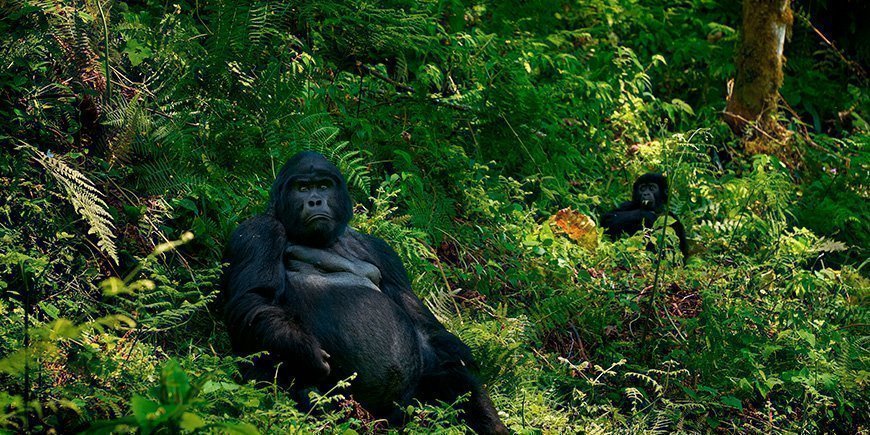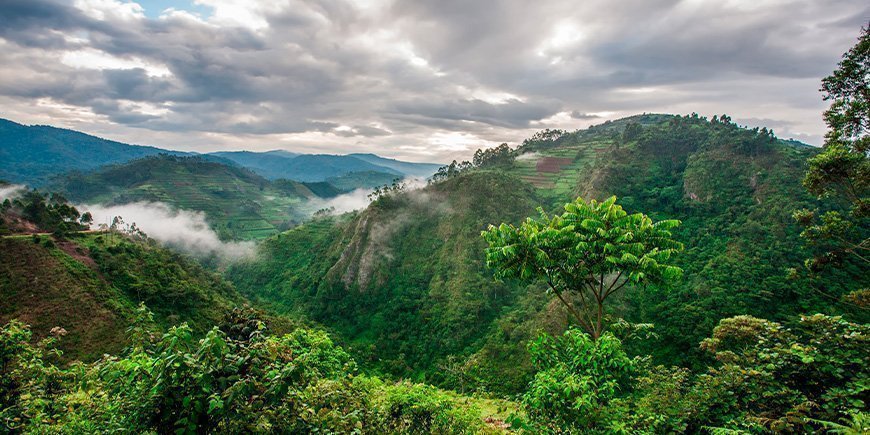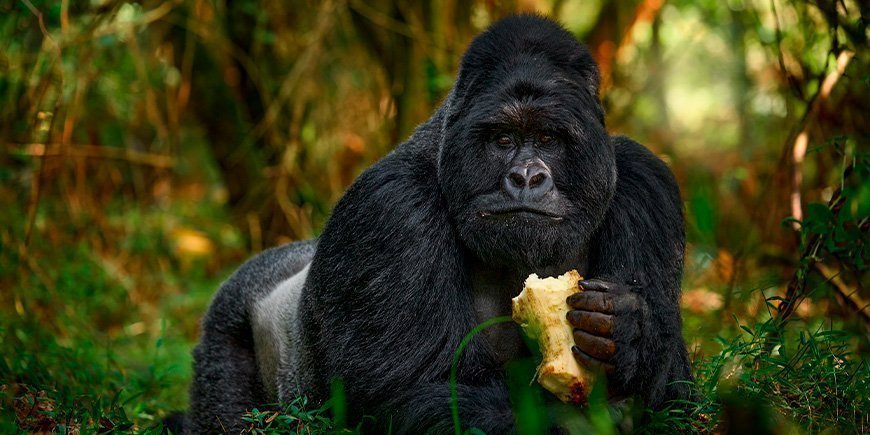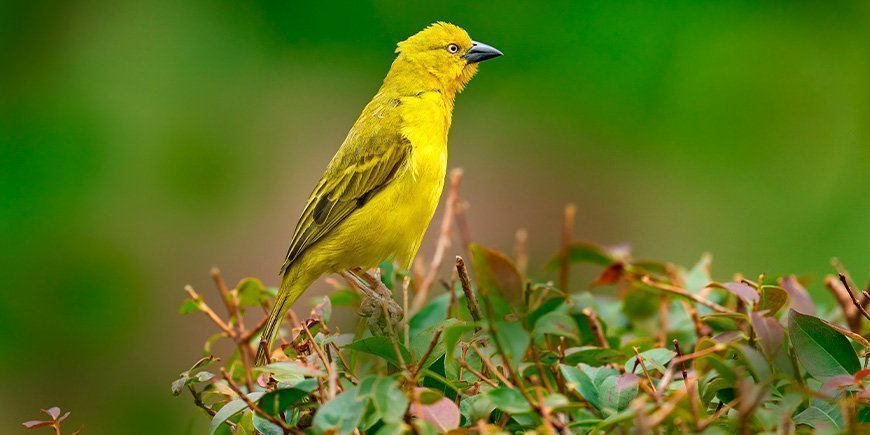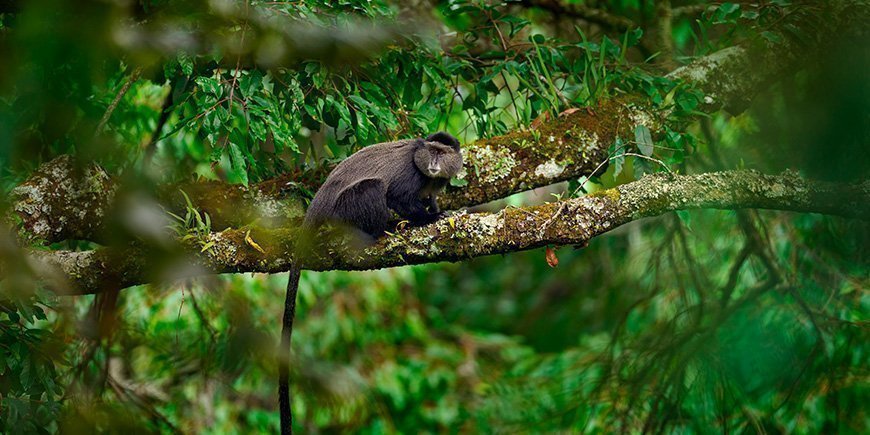Bwindi Impenetrable National Park in Uganda
17/03/2024Look forward to a tour to Uganda on which you experience the magnificent Bwindi Impenetrable National Park, a hidden treasure located in the south-western part of the country.
The national park is truly a paradise for nature and animal lovers. Plains meet mountain forests here, and the 32,000-hectare area is known for its rich diversity of trees, birds and butterflies. One of the most unforgettable moments you can enjoy in Bwindi is your encounter with the mountain gorilla, an endangered species that lives here in the beautiful forest.
The history of Bwindi Impenetrable National Park
Bwindi Impenetrable National Park has existed for over 25,000 years, but was officially converted into a national park in 1964. The purpose of the park has since been to protect the gorillas and other wildlife living in it, as well as to expand the park to its current size.
The forest is an Afromontane lowland forest. This type of forest is found in areas where lowland and montane forests meet, making Bwindi one of the few large areas in East Africa where this phenomenon occurs. These forests are known to be particularly sensitive to climate change, meaning that the area they cover and biodiversity can vary significantly over time. The dense vegetation in Bwindi includes creepers and bush, hence the “Impenetrable” in its name.
In 1994, the park became a UNESCO World Heritage Site due to its biodiversity, the large number of endangered gorillas and the many different types of butterfly and bird species.
Experience the gorillas right up close
Your visit to Bwindi Impenetrable National Park offers you the chance to come face to face with the gorillas on gorilla tracking hike.
Worldwide, there are just under 800 wild mountain gorillas left – more than half of which are in Bwindi.
Led by experienced guides from the Uganda Wildlife Authority, you set out on a tracking tour through the challenging forest terrain. A real adventure that can take anything from 45 minutes to six hours before you come face to face with these magical creatures.
When you reach a gorilla family, you have up to an hour to observe these majestic animals.
Gorilla tracking is an incredibly popular activity, and you need a permit issued by the Uganda Wildlife Authority (UWA) to see the gorillas. Only a few permits are issued per day in Bwindi Impenetrable National Park, ensuring that the gorillas are not disturbed by too many visitors. This also means that you enjoy a more intimate experience with the wild animals.
You can also experience…
The primary reason for travelling to Bwindi is to visit the gorillas. But so much more awaits you on your journey here.
So if you would like to experience animals other than gorillas, Bwindi Impenetrable National Park is also the place for you. Of all the animals in the park, the mountain gorilla is undeniably the most famous, but if you look around, you may also be lucky enough to see the ten other primate species in the park, including chimpanzees, blue monkeys and olive baboons. Despite having very few wetlands, the park also offers some 350 species of birds and more than 200 species of butterflies.
When is the best time to visit Bwindi?
Bwindi Impenetrable National Park can be visited all year round.
Due to Uganda’s equatorial position, temperatures are fairly stable throughout the year. On the other hand, the national park experiences a lot of rain.
However, most of the rain falls in the periods between March and May, and again between September and November, when it’s rainy season in Uganda. In the period from March to May, you’ll generally experience short showers, while from September to November, there can be hour-long downpours.
During the rainy season, the paths and terrain may be muddy and more difficult to walk. If you visit the park during the dry seasons from June to mid-September or from December to February, the trails are drier and the gorillas are easier to track.
TourCompass – From tourist to traveller
